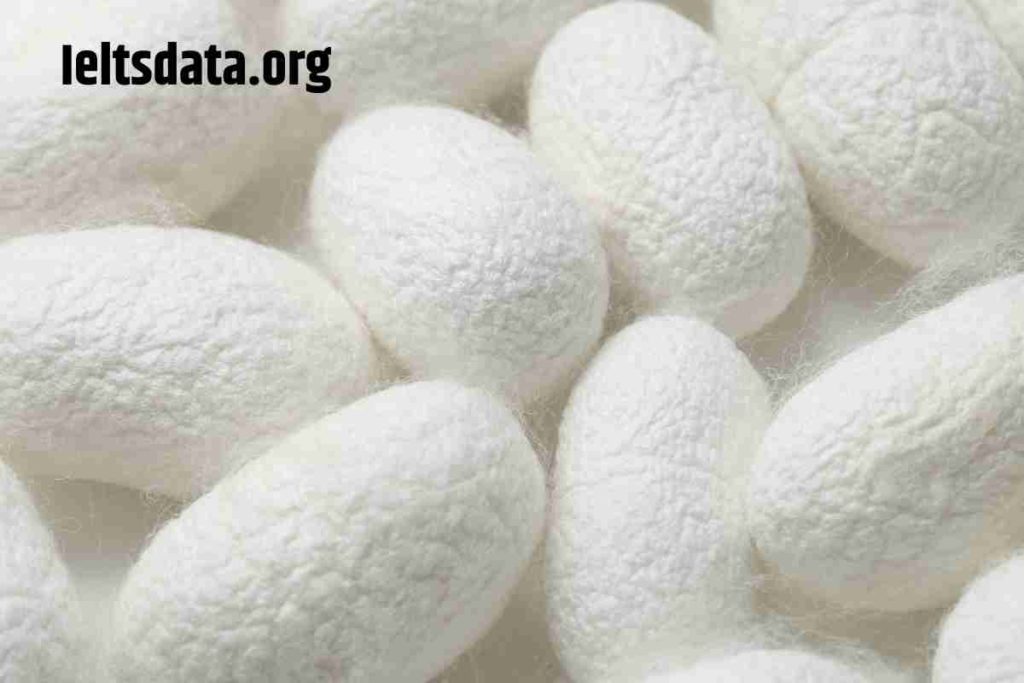The diagrams below show the life cycle of the silkworm and the stages in the production of silk cloth. Summarise the information by selecting and reporting the main features, and make relevant comparisons.
The diagram displays distinct differentiation of the silkworm in a cycle and the means through which silk cloth is produced.
Overall, the life cycle of a silkworm involves four significant changes, and there are five distinct stages in producing silk cloth.
In the initial stage of the life cycle of the silkworm, a matured insect feeds on the Mulberry leaf, where it then lays eggs. Then, within ten days, the eggs develop into a tiny larva on the leaf of the Mullberry. After 4 to 6 weeks, the larva differentiates into silk thread, typically in the shape of a sphere. In stage four, the final stage, the silk thread within which the larva is found metamorphoses into a cocoon within 3-8 days, and then, it grows to become a moth after 16 days.
In the production phase, the spherical cocoon is selected and placed into a container with water and boiled. It is then unwinded in the third stage and lasts 300-900m. After, it is twisted and placed in a dye. The final step includes weaving the twis,t which is also put in a shade to produce the expected silk cloth.
Follow us on Ieltsdata/Twitter

